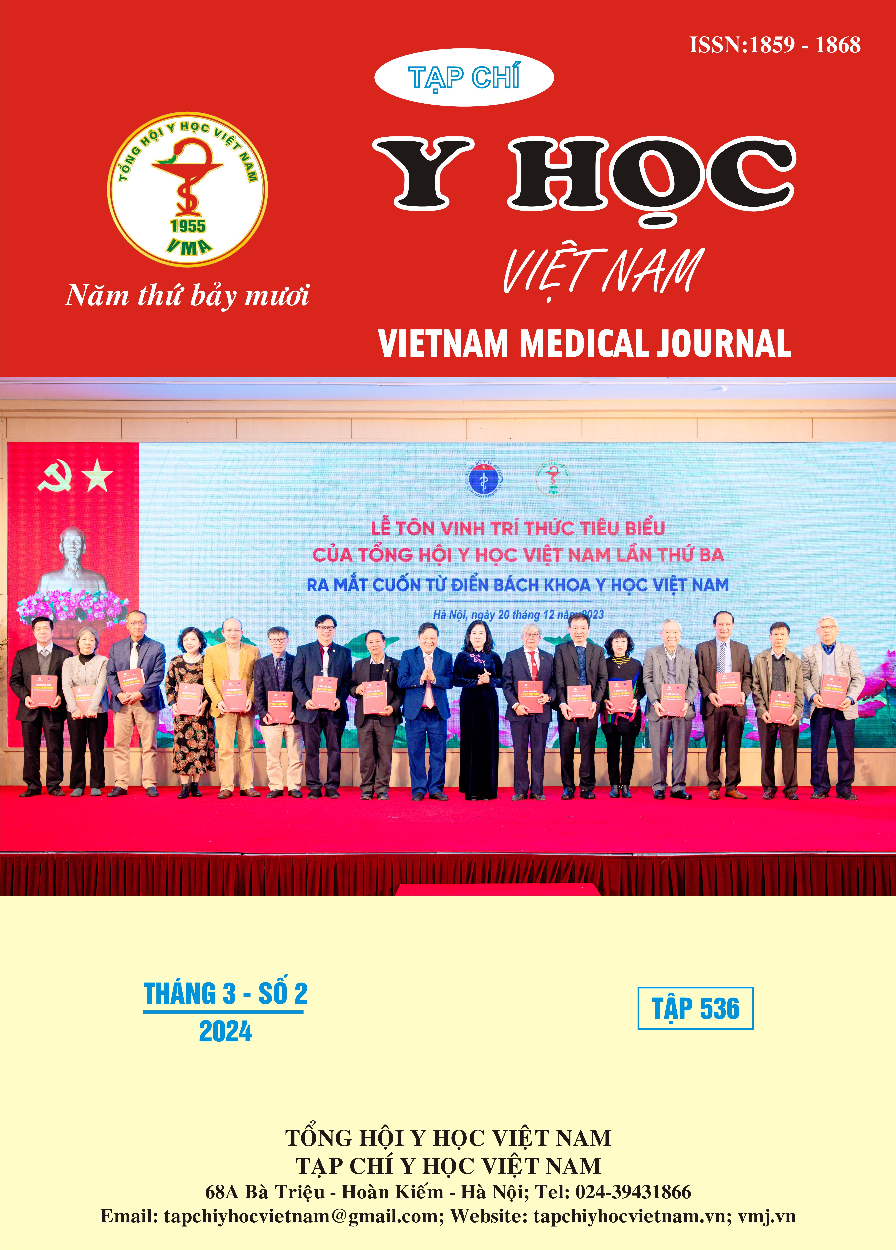APPLICATION OF ARTIFICIAL INTELLIGENCE FOR EVALUATION OF DIABETIC RETINOPATHY DISEASE AT HA DONG GENERAL HOSPITAL
Main Article Content
Abstract
Objectives: Conduct a survey on the applications of artificial intelligence in evaluating retinas of diabetic patients. Materials and methods: The study included patients diagnosed with diabetes who sought examination and treatment at the Eye Clinic of Ha Dong General Hospital. The research was conducted from August 2022 to July 2023, employing a cross-sectional descriptive study approach involving 228 patients. Participants were individuals diagnosed with diabetes who willingly participated and were randomly selected based on the medical examination list until the required sample size was reached. Color fundus images were examined by a vitreoretinal fluid specialist using the 2017 International Council of Ophthalmology (ICO) classification standards and were compared with the outcomes obtained from the Cybersight AI artificial intelligence application software. Results: The average age of patients in the study was 63,61 ± 11,01 years old, with a predominant representation of women, and type 2 diabetes accounting for the majority at 99,6%. The primary duration of the disease was less than 10 years, constituting 62.3%, accompanied by increased blood pressure (25.4%). The prevalence of diabetic retinopathy was 35,9%, with non-proliferative diabetic retinopathy accounting for 30% and the proliferative stage for 5,9%. The most common retinal lesions observed were microaneurysms (30,6%), exudates (20,6%), retinal hemorrhages (22,4%), and macular edema at 12,6%. The Cybersight AI software demonstrated a sensitivity of 90%, specificity of 95%, and an accuracy of 91.92% in diagnosing diabetic retinopathy. In detecting microaneurysm lesions and retinal hemorrhages, both hard and soft hemorrhages exhibited very high sensitivity at 87%, 95%, 93% and specificity at 93% và 98%, 71%, respectively. When staging diabetic retinopathy, the classification of each stage yielded different results. Conclusion: The rate of diabetic retinopathy is 35.9%. The application of artificial intelligence for screening diabetic retinopathy exhibits very high sensitivity and specificity.
Article Details
References
2. Tạ Văn Bình. Những Nguyên Lý, Nền Tảng Bệnh Đái Tháo Đường Tăng Glucose Máu. Nhà xuất bản Y học; 2007.
3. Commissioner O of the FDA permits marketing of artificial intelligence-based device to detect certain diabetes-related eye problems. FDA. Published March 24, 2020. Accessed July 7, 2022.
4. Abràmoff MD, Lavin PT, Birch M, Shah N, Folk JC. Pivotal trial of an autonomous AI-based diagnostic system for detection of diabetic retinopathy in primary care offices. NPJ Digit Med. 2018;1:39
5. Tufail A, Kapetanakis VV, Salas-Vega S, et al. An observational study to assess if automated diabetic retinopathy image assessment software can replace one or more steps of manual imaging grading and to determine their cost-effectiveness. Health Technol Assess Winch Engl. 2016;20(92)
6. Ting DSW, Cheung CYL, Lim G, et al. Development and Validation of a Deep Learning System for Diabetic Retinopathy and Related Eye Diseases Using Retinal Images From Multiethnic Populations With Diabetes. JAMA. 2017
7. Ruamviboonsuk P, Krause J, Chotcomwongse P, et al. Deep learning versus human graders for classifying diabetic retinopathy severity in a nationwide screening program. NPJ Digit Med. 2019;2:25.
8. Bawankar P, Shanbhag N, K SS, et al. Sensitivity and specificity of automated analysis of single-field non-mydriatic fundus photographs by Bosch DR Algorithm-Comparison with mydriatic fundus photography (ETDRS) for screening in undiagnosed diabetic retinopathy. PloS One. 2017
9. Larsen N, Godt J, Grunkin M, Lund-Andersen H, Larsen M. Automated detection of diabetic retinopathy in a fundus photographic screening population. Invest Ophthalmol Vis Sci. 2003.


